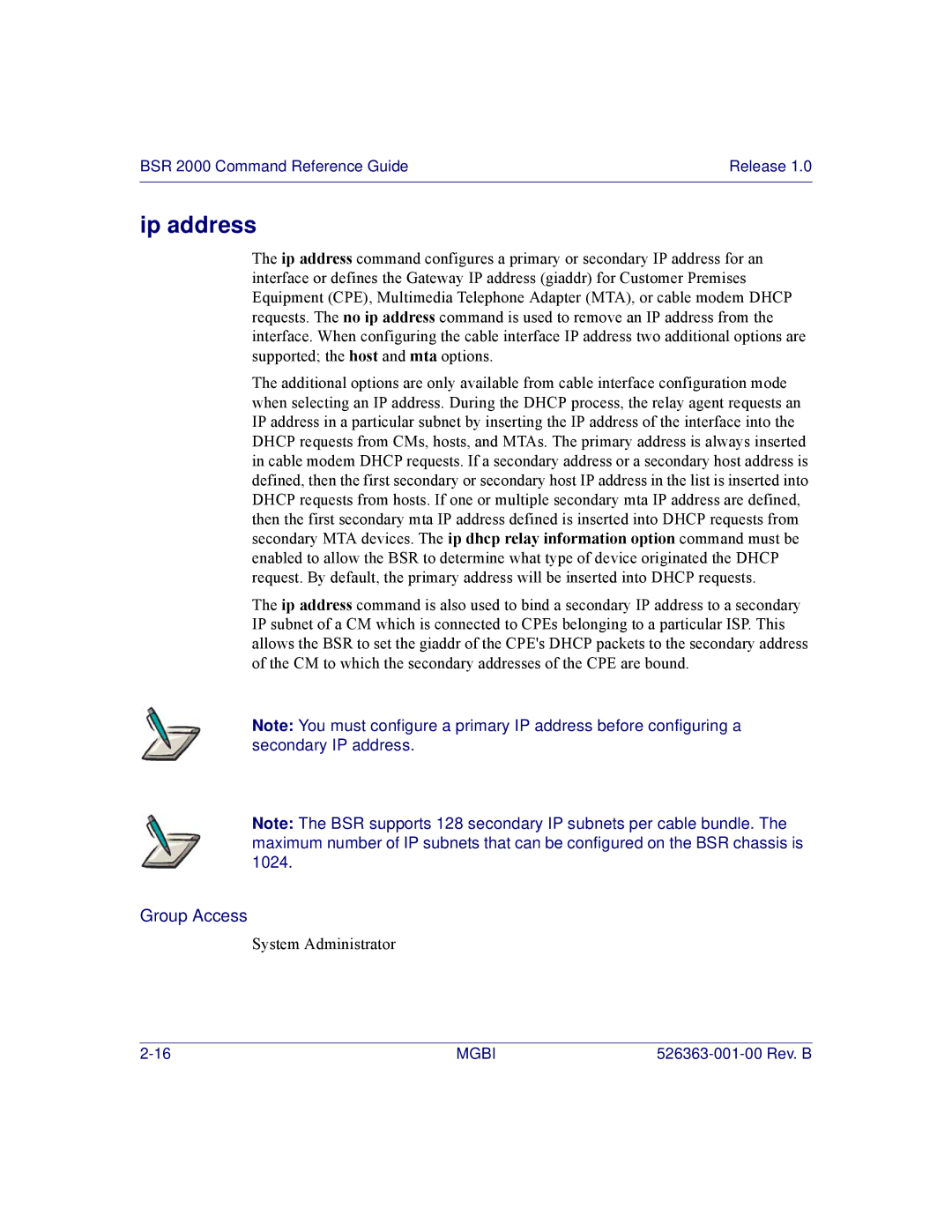
BSR 2000 Command Reference Guide | Release 1.0 |
|
|
ip address
The ip address command configures a primary or secondary IP address for an interface or defines the Gateway IP address (giaddr) for Customer Premises Equipment (CPE), Multimedia Telephone Adapter (MTA), or cable modem DHCP requests. The no ip address command is used to remove an IP address from the interface. When configuring the cable interface IP address two additional options are supported; the host and mta options.
The additional options are only available from cable interface configuration mode when selecting an IP address. During the DHCP process, the relay agent requests an IP address in a particular subnet by inserting the IP address of the interface into the DHCP requests from CMs, hosts, and MTAs. The primary address is always inserted in cable modem DHCP requests. If a secondary address or a secondary host address is defined, then the first secondary or secondary host IP address in the list is inserted into DHCP requests from hosts. If one or multiple secondary mta IP address are defined, then the first secondary mta IP address defined is inserted into DHCP requests from secondary MTA devices. The ip dhcp relay information option command must be enabled to allow the BSR to determine what type of device originated the DHCP request. By default, the primary address will be inserted into DHCP requests.
The ip address command is also used to bind a secondary IP address to a secondary IP subnet of a CM which is connected to CPEs belonging to a particular ISP. This allows the BSR to set the giaddr of the CPE's DHCP packets to the secondary address of the CM to which the secondary addresses of the CPE are bound.
Note: You must configure a primary IP address before configuring a secondary IP address.
Note: The BSR supports 128 secondary IP subnets per cable bundle. The maximum number of IP subnets that can be configured on the BSR chassis is 1024.
Group Access
System Administrator
MGBI |
